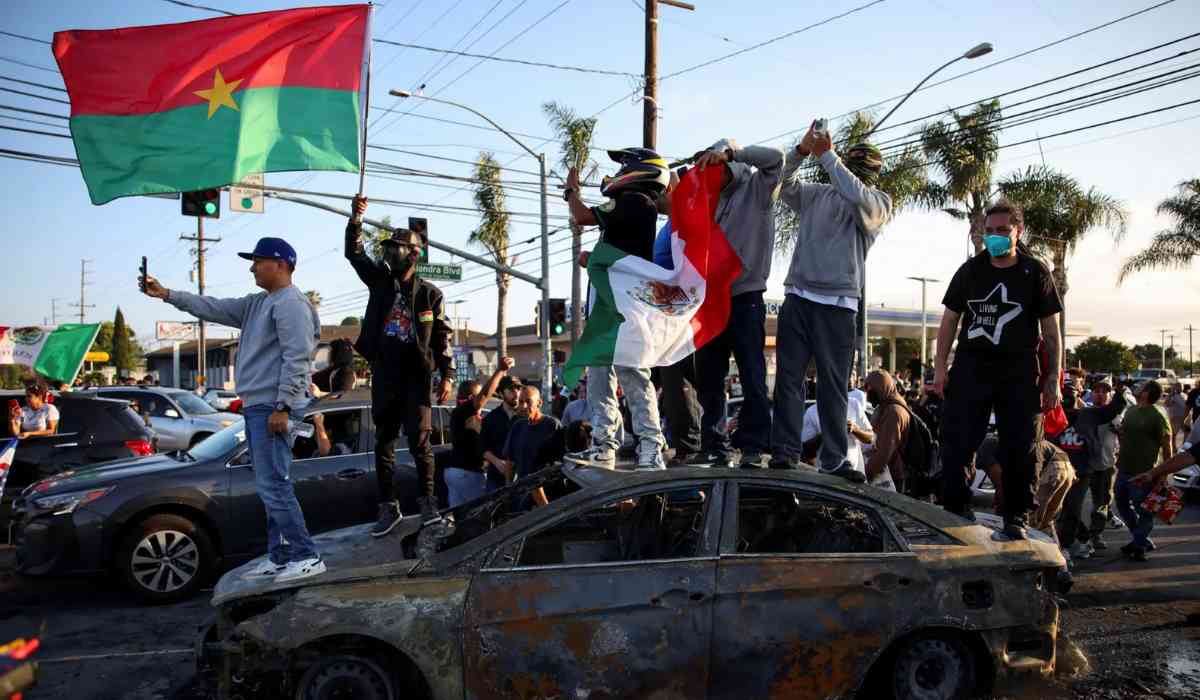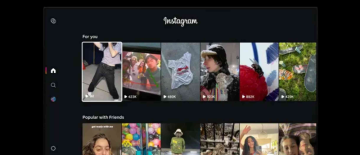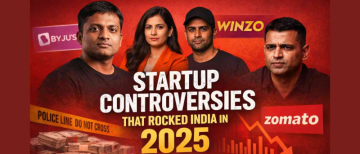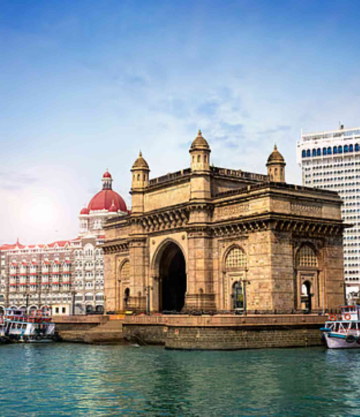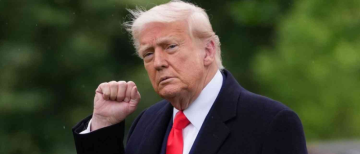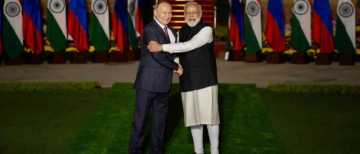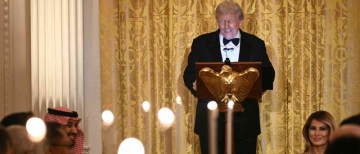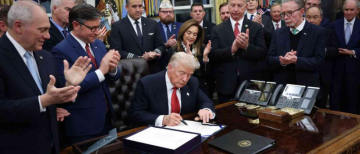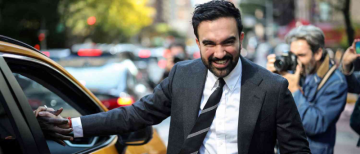Los Angeles, one of the most diverse cities in the United States, has been at the center of heated protests following a series of immigration raids by federal agents. Over the past three days, what began as peaceful demonstrations turned violent, drawing national attention and raising important questions about immigration policy, law enforcement, and the right to protest.
How Did the Protests Start?
🇺🇸🔥 Chaos Erupts in Los Angeles Over ICE Raids 🇲🇽🚨
Streets of LA are burning as protests explode into riots after aggressive ICE operations. 2,000 National Guard troops deployed,federal-state clash escalates . Tensions at a boiling point with clashes, tear gas, and Molotov… pic.twitter.com/07eLGQxRml— dbs morocco (@dbsmorocco) June 8, 2025
🚨 LOS ANGELES 📍
Rioter throws large rocks at Federal Agents during the LA riots
ICE are making mass arrests of illegal immegrants
Armed Federal Agents are handling rioters now.
National Guard has been called in.pic.twitter.com/7movcMpcx5— Kosher🎗 (@koshercockney) June 8, 2025
The unrest started after Immigration and Customs Enforcement (ICE) conducted several raids across Los Angeles, arresting more than 100 people suspected of being undocumented immigrants, including some alleged gang members. Many in the city’s large Latino community felt targeted and afraid, especially after rumors spread that day laborers were being detained at a local hardware store. These fears quickly turned into anger, leading hundreds of people to gather in protest.
Escalation and Violence
As the protests grew, so did tensions. Crowds of up to 400 people gathered in downtown Los Angeles and other neighborhoods, clashing with police and federal agents. Some protesters threw objects at officers, set cars and even driverless vehicles on fire, and vandalized property. Law enforcement responded with tear gas, non-lethal rounds, and declared an unlawful assembly, ordering people to disperse. At least 29 protesters were arrested on Friday night alone, and several officers were injured during the confrontations.
National Guard Deployment
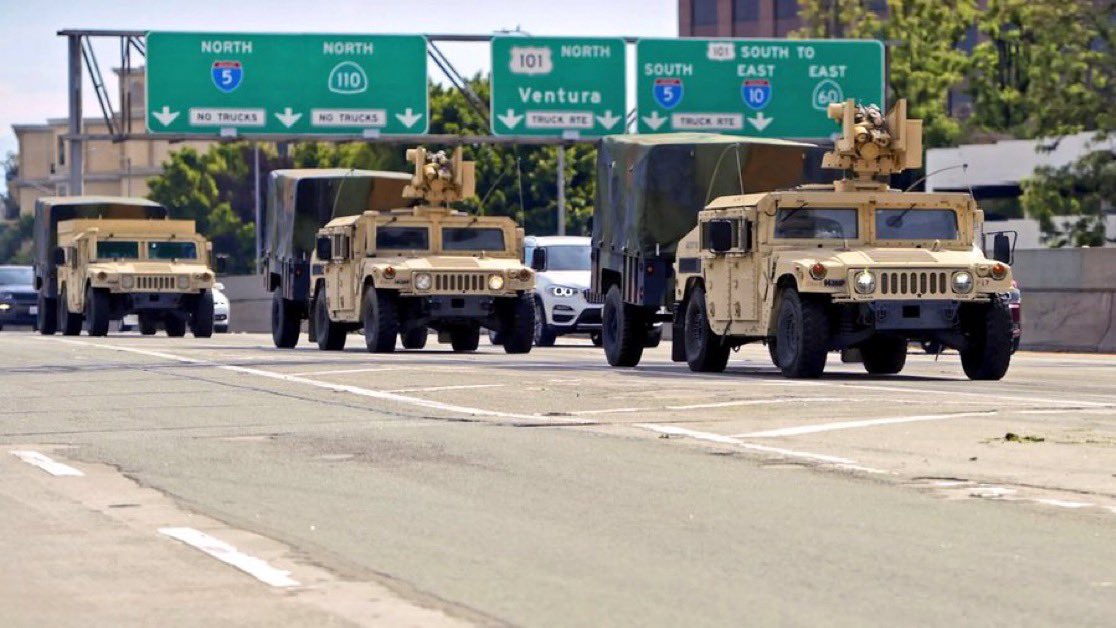
The situation escalated further when President Donald Trump ordered the deployment of about 2,000 National Guard troops to Los Angeles, bypassing the usual requirement for state governor approval. California Governor Gavin Newsom criticized this move, calling it a “serious breach of state sovereignty” and arguing that it only made the situation worse1. National Guard troops, armed and in riot gear, faced off with protesters outside federal buildings, adding to the sense of confrontation and fear.

The protests have sparked strong opinions on all sides. Supporters of the demonstrations say people are standing up for their community and their rights, especially against what they see as unfair and aggressive immigration enforcement. Many protesters waved Mexican flags and carried banners, chanting slogans against ICE and the federal government.
On the other hand, federal officials and some politicians have labeled the protests as riots and even “insurrection,” pointing to the violence, property damage, and attacks on law enforcement. President Trump described the events as “two days of violence, clashes and unrest,” and warned that such protests would not be tolerated.

Why Did Things Turn Violent?
Protests can become violent for many reasons. In this case, fear and anger over immigration raids, rumors about detentions, and the sudden appearance of heavily armed troops created a tense environment. Large crowds, emotional speeches, and confrontations with police can quickly lead to chaos, especially when both sides feel threatened or misunderstood. Sometimes, a small group of people may start the violence, but the whole crowd can get caught up in it.
What Happens Next?
As of now, the situation in Los Angeles remains tense. National Guard troops are still stationed in key areas, and city officials are urging calm while promising to review the actions of both protesters and law enforcement. Community leaders are calling for dialogue and peaceful solutions, while federal authorities say they will continue enforcing immigration laws.
A Bigger Conversation

The protests in Los Angeles are about more than just one city or one set of raids. They reflect deep divisions in the country over immigration, law enforcement, and the right to protest. While violence is never the answer, it is important to understand why people are upset and what can be done to address their concerns in a peaceful way.
As the city recovers, many are asking: How can we keep our communities safe while respecting everyone’s rights? How should the government handle immigration? And how can protests remain peaceful, even when emotions are high?
These are questions that Los Angeles—and the rest of the country—will continue to face in the days ahead.
With inputs from agencies
Image Source: Multiple agencies
© Copyright 2025. All Rights Reserved Powered by Vygr Media.

